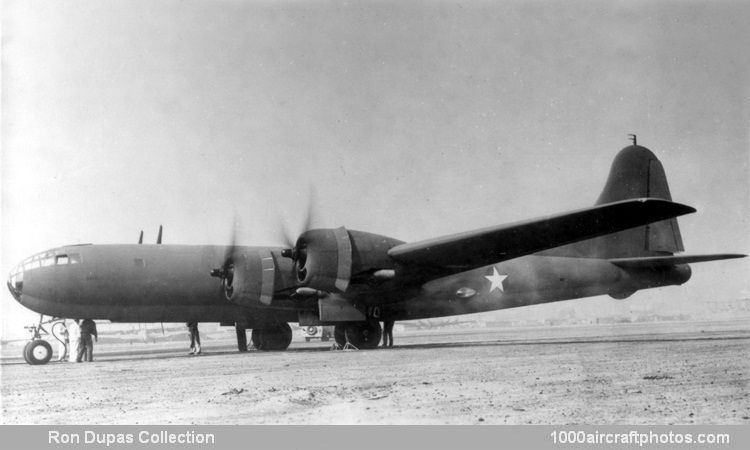03/15/2017. Remarks by Johan Visschedijk: "Two XB-29 prototypes were ordered on September 6, 1940, along with one static test example; a third flyable XB-29 was ordered on December 14, 1940. With Boeing's Chief Test Pilot Edmund T. "Eddie" Allen at the controls the pictured first XB-29 flew from Boeing Field on September 21, 1942. This aircraft was without the planned remotely-controlled armament system to accelerate flight testing. It was powered by four 2,200 hp Wright R-3350-13 engines driving 17 ft (5.18 m) diameter three-bladed propellers, however, this engine type was subject to chronic overheating. By December, after 23 test flight totaling only 27 hours, sixteen engines had been replaced as well as 22 carburetors, while nineteen exhaust systems had been revised.
The second XB-29 (s/n 41-003 c/n 2481) was flown for the first time on December 29, 1942, with Eddie Allen at the controls again. The flight was discontinued when propeller problems occurred on the number four engine, subsequently the engine caught fire and Allen was barely able to get the aircraft back to Boeing Field where the fire was put out by ground crew. A month later, January 29, 1943, the aircraft was flown again and by February 17, it had made eight flights totaling 7:27 hours. Since September 21, the two prototypes had between them a total of 34:27 hours in 31 flights. Aside from the engine problems, the performance and handling qualities of the B-29 were found to be excellent.
However, disaster struck the next day on the ninth flight of the second prototype. Eight minutes after take off the number 1 engine caught fire and Eddie Allen immediately turned back to Boeing Field. Another eight minutes later there was an explosion and the wing spar was on fire, three crew members bailed out at a height too low to for their parachutes to open. Only one minute later, and 3 mls (5 km) short of the runway, the aircraft crashed into the Frye Meat Packing Plant. Eddie Allen and the other seven crew members on board as well as an additional twenty people on the ground were killed.
Some delay was then encountered in the development program while fire hazards in the XB-29 were reduced, but in June 1943, the third Seattle built prototype (s/n 41-18335 c/n 2884) began its flight tests. This third machine embodied extensive engine and equipment revision which resulted from experience gained with its two predecessors, and was soon handed over to the USAAF at Wichita for armament and accelerated flight testing. This prototype also crashed, but not before the potential of the design had been indicated.
As part of the effort to expand the production and test flight program, the first XB-29, appropriately named "The Flying Guinea Pig", was flown to Wichita on August 30, 1943. It returned to Seattle by end of 1943 and remained at Boeing throughout the war as a test aircraft, it was scrapped on May 11, 1948."
